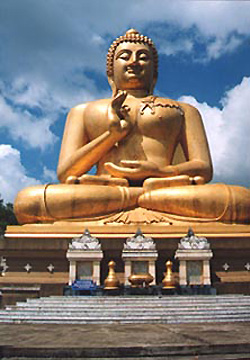| 2. Canonical Buddhism and Practical Buddhism In studies of religion, broadly speaking there are two approaches. One is the kind of study that gives weight to research into sutras, an example being studies of Theravada Buddhism in Mainland Southeast Asia, which aim to understand this type of Buddhism through examination of the three collections of Buddhist scriptures that make up the Pali Canon (Sutra Pitaka, Vinaya Pitaka, and Abhidharma Pitaka). Another approach is one in which attention is directed towards religious behavior as practiced by people in their everyday lives, a type of research that in terms of Theravada Buddhism examines the acts that accumulate merits in the present world, acts that are done with a view to changing one’s life for the better in the next world, as well as the beliefs that surround the use of amulets. These two approaches are not opposed to each other. Canonical studies and those of Buddhist practice interrelate with each other in a complementary way, even if not 100 percent. By consulting both approaches reciprocally, our understanding of religion becomes that much enriched. In ASAFAS, it may be a slight exaggeration to call it a sutra but introductory printed materials exist, such as the student application guidebook and school prospectus and the color pamphlet shown on the first page of this writing. The Graduate School as portrayed in the “sutra” and the Graduate School as it operates in practice, are two aspects that, as is the case in religion, do not always finely overlap with each other. As a participant in fieldwork on ASAFAS, that is to say, as a teacher in ASAFAS, I should now like to try and outline some impressions of the practical side of the Graduate School since its establishment in 1998.
KATO Tsuyoshi |
